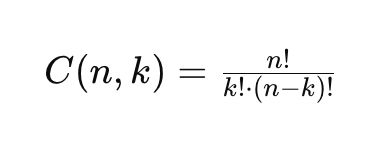
The World of Lotto
When we talk about lotto, many immediately think of the dream of immense wealth that can become a reality overnight. Yet, behind the sparkling promises and colorful lotto tickets lies a world governed by numbers, probabilities, and statistics. To understand the probability of winning in lotto, one must not only deal with simple numbers but also grasp the principles behind these numbers.
Lotto is a game that has existed for centuries and is widespread in many cultures around the world. The essence of the game is simple: you select a certain number of numbers from a given set, and if these numbers appear in the draw, you win. Sounds simple, right? However, the reality is that the chances of hitting the jackpot are extraordinarily slim. This leads us to the question: Why do people around the world continue to play lotto despite the low winning probabilities?
Part of the answer lies in human nature. We are inherently optimistic beings who see something positive in the possibility of a life-changing win. Moreover, playing the lotto provides a form of entertainment and excitement that comes with the hope of a big win. Yet, to make an informed decision about whether lotto is the right game for you, it’s important to have a clear understanding of the lotto statistics and the probabilities behind the draws.
In this section, we’ve provided an overview of what lotto is and why it remains popular despite the low chances of winning. Next, we will delve deeper into the subject and examine the fundamentals of winning probability in detail. We will explore how these probabilities are calculated and what they mean for you as a player. Stay tuned to learn how you can use your understanding of lotto probabilities to make more informed decisions when playing the lotto.
Fundamentals of Winning Probability
To grasp the essence of lotto playing, it’s essential to engage with the basics of winning probability. The winning probability refers to the chance of a specific event occurring – in our case, selecting the correct numbers that will be drawn in a lotto draw. This probability is often expressed in terms of odds or as a percentage chance.
Lotto draws follow the principle of randomness, meaning that every number has an equal chance of being drawn. This circumstance makes calculating the probabilities particularly interesting, as it is based on mathematical principles rather than past results or patterns. A common misconception among lotto players is that certain numbers are “due” because they have not been drawn for a long time. However, this assumption contradicts the principle of randomness that underlies lotto.
Calculating the winning probability in lotto is a mathematical challenge based on combinatorics. Combinatorics is a branch of mathematics that deals with the number of ways to select from a given set of objects (in this case, numbers) without regard to the order. For a standard lotto game, where you pick 6 numbers from 49, the number of possible combinations can be calculated using a specific mathematical formula. This formula shows that the chances of winning the jackpot are about 1 in 139 million – a figure that highlights the enormous challenges of winning the jackpot.
It’s important for lotto players to develop a healthy understanding of these probabilities. While it may be tempting to drift into the dreamland of huge jackpots, a realistic view of the winning chances provides a sober perspective on lotto playing. This doesn’t mean one shouldn’t play; it simply means that one’s decisions should be based on a solid understanding of the underlying probabilities.
Furthermore, lotto players can influence their chances to some extent by applying certain game strategies. These include playing systems that allow choosing more than the usual number of numbers, thereby increasing the number of winning combinations. Such strategies can improve the probabilities, but they also increase the cost of participating in the game.
In this section, we’ve looked at the fundamentals of winning probability in lotto and its calculation methods. In the next section, we will take a closer look at the mathematical calculation of these probabilities and find out how lotto players can use this knowledge to improve their gaming strategy.
How to Calculate Lotto Probabilities?
Calculating lotto probabilities fascinates many as a blend of mathematics and gambling. This section sheds light on how these calculations are performed, offering insight into the mathematical principles that form the foundation of lotto playing.
To calculate the probability of a lotto win, we must understand combinatorics, an area of mathematics concerned with the number of ways to select or arrange objects. In the context of lotto, this means determining the various ways number combinations can be selected from a given set.
Let’s consider the classic 6-from-49 lotto game as an example. In this game, a player picks six numbers from a pool of 49. The question we want to answer is: How many different ways are there to select six numbers from 49? The answer is provided by the combinatorial formula for combinations without repetition:
Where:
- C(n,k)C(n,k) represents the number of combinations of nn objects taken kk at a time.
- n!n! denotes the factorial of nn, i.e., the product of all natural numbers up to nn.
- kk is the number of selected objects.
Applying this formula to our 6-from-49 example yields:
This calculation results in a total of approximately 13,983,816 possible combinations, setting the probability of winning the jackpot at 1 in 13,983,816. This number highlights the enormous challenge of achieving the main prize in lotto.
However, it’s important to understand that lotto statistics are not based solely on the jackpot. There are also prizes for correctly predicting fewer numbers, which increases the overall probability of winning any prize. The calculation of these probabilities follows a similar principle, varying the number of chosen numbers and the number of matching numbers.
Knowing these mathematical foundations allows lotto players to have a more realistic view of their chances. While the hope for a big win remains enticing, a solid understanding of the probabilities provides a strong basis for decisions within the context of lotto playing. This knowledge can help calibrate expectations and develop a strategy that considers both the enjoyment of the game and the potential winning odds.
In the next section, we will explore how lotto statistics can influence playing strategies and the role of myths and truths in the world of lotto playing.
The Impact of Lotto Statistics on Playing Tactics
 Lotto statistics and understanding winning probability are not only important for general insight into lotto but also directly affect the strategies players employ. While there is no method that guarantees a jackpot, players can adjust their tactics to optimize their chances of winning. In this section, we explore how a well-informed understanding of statistics can influence playing tactics.
Lotto statistics and understanding winning probability are not only important for general insight into lotto but also directly affect the strategies players employ. While there is no method that guarantees a jackpot, players can adjust their tactics to optimize their chances of winning. In this section, we explore how a well-informed understanding of statistics can influence playing tactics.
Diversification of Betting Slips: One of the simplest strategies based on statistical considerations is the diversification of played numbers. Instead of limiting oneself to a small selection of numbers, it may be wise to cover a broader spectrum. This doesn’t increase the probability of winning the jackpot but can improve the chances of smaller wins.
System Plays: Another approach based on statistical grounds is playing systems. With a system bet, the player picks more than the usual number of numbers, automatically covering all combination possibilities of these numbers. This method significantly increases the chances of winning, though it also comes with higher costs.
Community Plays: Participating in lotto pools or betting communities is another popular strategy. By teaming up with other players, one can play a larger number of betting slips without increasing individual costs. This leverages the power of statistics by enabling more number combinations to be covered, thus increasing the probability of smaller and medium wins.
Analysis of Winning Numbers: Some players tend to analyze historical winning numbers to identify patterns or frequently drawn numbers. Although each draw is independent and the past has no direct influence on future draws, this method can help players make more conscious decisions for or against certain numbers. However, it’s important to emphasize that this doesn’t guarantee wins, as lotto remains a game of chance.
Avoiding Birthday Numbers: A simple yet often overlooked tactic is avoiding numbers below 31, which are frequently chosen due to birthdays. By including higher numbers, one reduces the likelihood of having to share a win if successful.
Applying these strategies requires balancing the acceptance of the mathematical realities of lotto with the desire to optimize one’s winning chances. Ultimately, lotto remains a game of luck, and no system or tactic can predict the outcome of a draw. Yet, by understanding the underlying lotto statistics and winning probabilities better, players can make informed decisions and adjust their approach to playing.
Myths and Truths About Lotto Wins
Over the years, numerous myths and superstitions have developed around lotto playing. Some have become so ingrained in players’ minds that they’re almost regarded as incontrovertible truths. But what’s the reality behind these beliefs? In this section, we aim to demystify some of the most widespread myths and replace them with facts, based on our understanding of lotto statistics and winning probabilities.
Myth 1: Certain numbers are “luckier” than others. Many players believe that some numbers are drawn more frequently than others and are thus “luckier.” In reality, every number has the same chance of being drawn in each draw. Lotto draws are random, and no number has an advantage over others.
Myth 2: Certain patterns on the betting slip increase the chances of winning. Some players tend to choose their numbers so they form visually appealing patterns on the betting slip. While this can certainly be an entertaining method, it has no impact on the winning probabilities. Every number combination is statistically just as likely as any other.
Myth 3: “Overdue” numbers are more likely to win. The belief that certain numbers are “due” because they haven’t been drawn for a while is a widespread misconception. As mentioned before, each lotto draw is independent of the previous ones, and the probabilities do not change based on past results.
Myth 4: After a big win, the chances of another jackpot are lower. Some players believe that after a large jackpot has been won, the chances of another high win are lower. This is not true, as each draw is independent and the size of the jackpot has no influence on the winning probabilities.
Truth: The only way to improve winning chances is by purchasing additional betting slips. Although this mathematically increases the probabilities, lotto remains a game of chance, and wins are never guaranteed. It’s important to play responsibly and view lotto playing as a form of entertainment, not an investment strategy.
Understanding these myths and truths can help set realistic expectations for lotto playing and make informed decisions. In the next section, we will discuss some strategies for lotto players who want to optimize their playing style based on statistical insights and personal responsibility.
Strategies for Lotto Players
For many people worldwide, lotto playing offers an exciting chance to possibly win the big jackpot one day. Although the odds, as we’ve seen, are extremely slim, there are still strategies players can apply to enhance their playing experience and enjoy it responsibly. These strategies are not meant to create an illusion of outsmarting the system but rather to assist in making wise decisions and consciously enjoying the game.
- Set a Budget: One of the most important pieces of advice for any lotto player is to set a clear budget. Lotto playing should be fun and not lead to financial difficulties. Decide how much you are willing to spend monthly or weekly, and strictly adhere to it.
- Understand the Rules: Different lotto games have different rules and winning probabilities. Some games offer better odds but smaller wins, while others have lower winning chances but potentially life-changing jackpots. Familiarize yourself with the different games and their rules to choose the right one for you.
- Avoid Common Number Combinations: As mentioned earlier, many players tend to choose birthdays and other significant dates, leading to numbers under 31 being played more frequently. By considering higher numbers as well, you can reduce the likelihood of having to share a win.
- Consider Joining a Betting Pool: Betting pools can not only enhance the social aspect of lotto playing but also increase the number of betting slips played without having to spend more money. This increases your chances of winning, though you’ll have to share the win.
- Maintain a Positive Attitude but Stay Realistic: Hoping for a big win is part of the allure of lotto playing. It’s important to stay optimistic but also realistic regarding the chances of winning.
- Keep Your Betting Slips Safe: It may sound trivial, but make sure you know where your betting slips are and check them after each draw. There are countless stories of people who won but couldn’t claim their prize because they lost their betting slip.
- Play Responsibly: Lastly, and perhaps most importantly, it’s crucial to play responsibly. Lotto playing can be addictive, and it’s important to seek help if you feel your gambling behavior is getting out of control.
By applying these strategies, you can not only enhance your experience with lotto playing but also ensure that your gambling behavior remains healthy and responsible. Remember, lotto is primarily a form of entertainment, and enjoy the game in that spirit.



